I am attempting to create a dock panel inside of a list view data template that takes up all of the available width of its parent tab control. I started by basing my XAML off of this question and thus came up with this:
<TabControl x:Name="tabControl" HorizontalAlignment="Stretch" VerticalAlignment="Stretch">
<TabItem Header="Clipboard Buffer">
<ListView Name="clipboardListView" ScrollViewer.CanContentScroll="True">
<ListView.ItemTemplate>
<DataTemplate>
<Border BorderThickness="2" BorderBrush="Black" CornerRadius="2,2,2,2">
<DockPanel Background="AliceBlue" Width="{Binding ActualWidth, RelativeSource={RelativeSource FindAncestor, AncestorType={x:Type TabControl}}}">
<TextBlock Text="{Binding Text}" DockPanel.Dock="Top" />
</DockPanel>
</Border>
</DataTemplate>
</ListView.ItemTemplate>
</ListView>
</TabItem>
...
This almost works, however the dock panel always seems to be just a little bit wider than the space available in the tab control as you can see here.
I can use the scroll bar to move over and see the end of my dockpanel as one would expect...
However, if I attempt to re-size the form, the dockpanel remains slightly larger than the amount of space available in the tab control.
What am I missing here? How can I make my dock panel stay within the width of its parent tab control?


